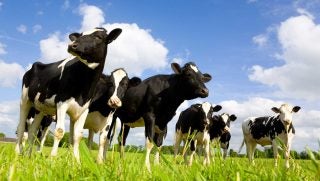Cryptosporidium parvum is a highly infectious zoonotic parasite that causes cryptosporidiosis, one of the most significant gastrointestinal diseases in cattle.
Merck Animal Health, or MSD Animal Health outside of the United States, has developed the first maternal vaccine to protect cattle against Crypto infection. Bovilis Cryptium is indicated for the active immunization of pregnant cows to raise antibodies in colostrum against gp40 of C. parvum.
Now, that vaccine has received a positive opinion by European Medicines Agency’s Committee for Veterinary Medicinal Products.
“C. parvum is a relentlessly challenging pathogen for cattle producers across Europe and worldwide. It is highly contagious and fast-spreading, and its contamination can be unavoidable in environments where cattle, goats, and sheep live,” said Philippe Houffschmitt, DVM, MBA, associate vice president of the global ruminant business at Merck Animal Health. “We are pleased the CVMP recognizes the vaccine’s capability to help solve such a significant problem. We look forward to working with European regulators to potentially expand the preventive neonatal vaccine market with this new therapeutic category.”
According to Merck, vaccinating pregnant heifers and cows can protect calves at birth — when they are most vulnerable. The parasite plays a significant role in developing calf scours, the most common cause of death in young calves, and can have longer-term effects on weight gain and production efficiency in severe cases.
The efficacy of Bovilis Cryptium was previously established in various field studies, which showed that the therapy elicits a robust immune response against C. parvum in newborn calves fed with colostrum from vaccinated pregnant heifers or cows, significantly reducing clinical signs such as diarrhea caused by C. parvum.


